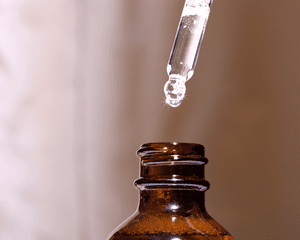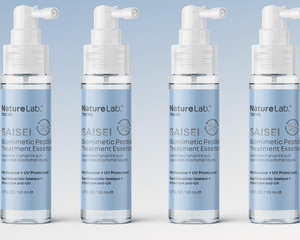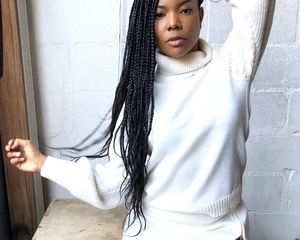:max_bytes(150000):strip_icc()/steps-to-grow-back-a-thin-hairline-400144-V1-01-a29b6df1b030402ebc946d05766c79b3.png)
Stocksy / Design by Camden Dechert
Thinning hair comes with its fair share of feelings. Seeing your thick, luscious ponytail dwindle into a thinner, less-voluminous version of itself is sad enough as it is. But watching your hairline fade slowly and creep back one millimeter at a time is an entirely different kind of torture. Since sparse edges can ruin your hairstyle and take a shot at your confidence, we're exploring some options to recover a receding hairline.
We tapped multiple experts, including celebrity hairstylist Cervando Maldonado, Dr. Christine Shaver of Bernstein Medical Center for Hair Restoration in New York City, and BosleyMD certified trichologist Gretchen Friese, to get the inside scoop.
"Although every situation is different, and some might have a harder time growing it back, a receding hairline can regrow," says Maldonado. With hair-growing tips from an expert, consistency, and the willingness to experiment, anything is possible. Ahead, nine tips to try if you want a fuller hairline again.
:max_bytes(150000):strip_icc()/Steps-to-grow-back-a-thin-hairline-400144_final2-287523294e1c4a18b729f5c70e00f53d.jpg)
Disclaimer: These steps are intended to repair a thin hairline caused by poor care or severe damage. Thinning due to pregnancy, post-birth, menopause, or a change in medications can cause temporary changes. In some cases, women will see their hairlines return after hormones go back to normal. If you suspect a medical cause for a receding hairline or overall thinning of hair, talk to your doctor, as there may be an underlying condition that needs treating.
Establish The Root Of The Problem
The first thing to do is to determine the reason for the hairline recession. "There are many causes of hairline recession in women," says Shaver, "These include androgenetic alopecia (genetic thinning), traction alopecia caused by long-term tight hairstyles, inflammatory alopecia (of which the main types are lichen planopilaris (LPP), and Frontal Fibrosing Alopecia (FFA)), and also alopecia areata (a type of autoimmune hair loss where hair follicles are mistakenly attacked by the body’s immune cells). It is important to have a thorough history and examination with a dermatologist in order to determine the cause for hair loss."
"Hereditary traits and changes in hormones can both naturally cause a receding hairline but can usually be adjusted by your doctor," explains Maldonado. If you notice that your mother or other members of your family have thin and receding hairlines, a dermatologist might be the answer.
If you've recently given birth, the good news is you might just be caught in a waiting game. "Usually six to nine months after having a child, most women lose hair around their hairline," notes Maldonado. While it is normal, there's no denying it's something you'll want to treat. "A solution to this is to keep taking your prenatal vitamins for a while even after giving birth to help keep the hair stronger and slow the hair fall-out."
Remove Your Semi-Permanent Hair Extensions
Constant pulling and weighing down your strands can also be the cause of a receding hairline. Maldonado says, "glue-in and tape-in extensions placed too close to hairline" can be a significant cause of recession. "I usually do not let my clients get extensions close to the front of the head since this is a delicate area, and because it can cause permanent hair loss if not taken care of properly."
Byrdie Tip
If you love the thicker, longer look of hair extensions, try experimenting with clip-in styles. You'll get the fuller look you love, but with much more control.
Wear extensions further in the back and at the crown of your head to give your hairline a break, but be sure to take them out and give your scalp a rest in between applications and while you sleep.
Relax your up-dos
So maybe you don't have hair extensions, but have you considered the breakage your ponytail is causing? While a super tight high ponytail may look fabulous on Ariana Grande, the breakage and stress this up-do puts on your scalp is real. "Traction hair loss must be addressed by stopping the chronic hairstyles that are causing the thinning to occur," says Shaver. Try loosening the ponytail a bit to reduce the tension or opting out of the look altogether.
Try Regular Scalp Massages
While some options might be expensive and require a professional, like hiring a dermatologist, there's one approach to regrowth that can be done by yourself and won't cost you a dime. Cervando says, "in most cases, frequent scalp massages can stimulate new hair growth." Although the hair that grows back "won't be super thick, scalp massages could help lightly fill in the area." However, he does mention it won't work in every case (again, everyone is different), but it's worth trying. Friese agrees that "massaging the scalp at the hairline will increase circulation and encourage hair growth."
When you massage your head, it's important only to use the pads of your fingers; don't rake over this sensitive area with fingernails. Move fingers in a gentle, circular pattern for a few minutes every day. Try not to press down firmly on your hairline, as this can stunt growth.
Apply Nourishing Oils To Your Scalp
While you're massaging your scalp, the addition of healthy products can aid in the regrowth process. Just be sure to avoid any that are notorious for clogging up pores, such as products with petroleum. "I like tea tree oil because it helps unclog hair follicles and nourish your roots," says Maldonado. If you're looking for a DIY hair-growth treatment, he recommends "mixing a few drops of tea tree oil with any carrier oil, like coconut, jojoba, or almond. Mix it well and massage the mixture on the scalp, then rinse thoroughly." Your hair will feel much softer, and your roots will be fully nourished and prepped for new growth.
Try PRP Treatments
PRP is a non-invasive injectable treatment that uses a patient’s own blood. Your blood sample is drawn and then placed in a centrifuge for 10 minutes. While it’s in there, the tube is rapidly spun to separate the plasma from red blood cells. The separated plasma contains the platelet-rich plasma, which is then injected or micro-needled into the scalp. This works to stimulate hair growth. While the treatment is pricey ($400 or more a session), it is effective.
Hair Transplant
Have you ever heard of a hair transplant? Well, it's a real thing. "Because hair follicles are living organs, they can be transplanted from one part of the body to another," says Friese. "The transplantation is a surgical technique that removes hair follicles from one part of the body, called the 'donor site' to a bald or balding part of the body known as the 'recipient site.' The technique is primarily used to treat male pattern baldness but can also help fill in scar tissue and other areas of thinning or missing hair."
Shaver says, "Hair transplants can be very effective for women who have thinned hairlines and have a good donor supply of hair at the back and sides of their scalp that is not showing evidence of thinning. This can provide a dramatic difference in volume and has great cosmetic benefits. But not all women are suitable candidates, as many thin diffusely over their scalp and, therefore, don’t have an adequate donor supply of hair." If you think this could be the right option for you, consult with your dermatologist.
Take Supplements
You know the expression you are what you eat? External changes can come from your diet and the vitamins you consume, which causes changes to happen internally, like hormones. Maldonado recommends consuming over-the-counter vitamins. "You will see a difference in your hairline after about three months of taking hair-regrowth supplements." He adds, "but remember, this difference is more of a filler and helps strengthen the hair, and help it grow faster." If you're looking for major changes in the thickness of your hairline, he says, "the best way to regrow it is by taking supplements or a certain medication prescribed by your doctor." As for additional supplements, Nutroful and Viviscal ($34), are among Madonado's favorites, as they are both natural daily supplements.
Maintain A Healthy Diet
Whether or not you're experiencing changes in your hair, a daily multivitamin should be part of your regular regimen, as well as an overall healthy diet full of fresh fruits, vegetables, whole grains, lean protein, and plenty of water.
Shaver states, "If there is an underlying vitamin deficiency, then it is important that this be corrected, as this may be an uncommon cause of hair loss. Iron deficiency, on the other hand, is a common cause of hair loss in women, especially in those that are heavily menstruating or are vegetarians," says Shaver.
Byrdie Tip
Broccoli, spinach, and mushrooms are all vegetables high in iron and great for growing healthy hair.
When it comes to regrowing any hair, remember, nothing you do will give you visible results overnight, and it's important to keep in mind as you get started on your hair regrowth journey. Above all else, the name of the game here is patience. Maldonado says, "like anything else, you have to put the time in." Now, gather your tools and get ready to put some time in. Trust us; you'll be glad you did.




